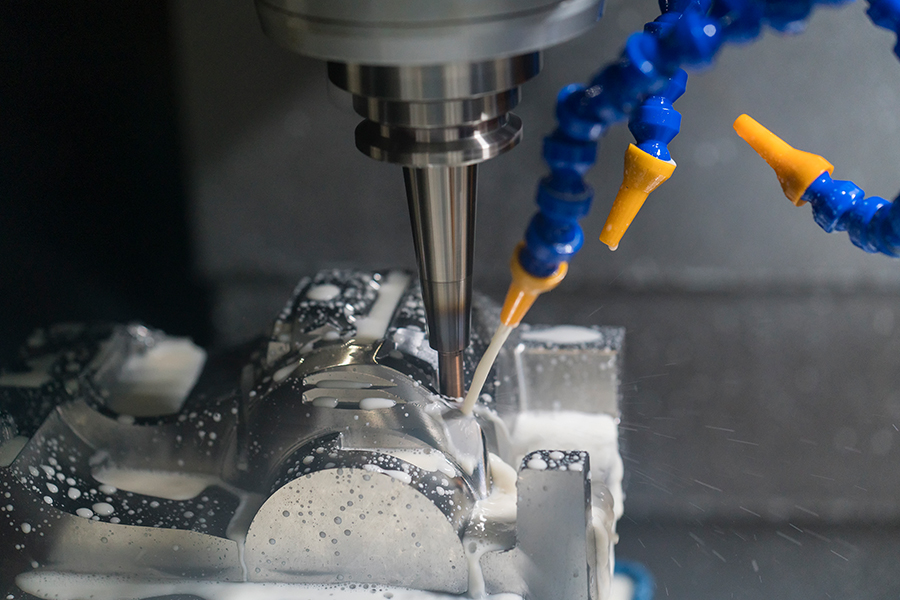The 7-axis CNC milling machining means that the machine tool has 7 axes for motion.
CNC milling machine is an automatic processing equipment developed on the basis of general milling machine. The processing technology of the two is basically the same, and the structure is somewhat similar. CNC milling machines are divided into two categories without tool magazine and with tool magazine. Among them, the CNC milling machine with tool magazine is also called machining center.
7-axis 5-linkage CNC machining tool means that the CNC machine tool has 7 servo axes, but two axes cannot move simultaneously with other axes, and only five axes can be linked.
7-axis linkage CNC machining tool means that the CNC machine tool has 7 servo axes (excluding the spindle) that can perform interpolation at the same time.
The 7 axes are X-axis, Y-axis, Z-axis, linear axis and their rotation axes A-axis, B-axis and C-axis.
7-axis means that the machine tool has 7 axes of motion. Five-linkage means that among the many motion axes of the machine tool, five axes can coordinate and move at the same time. The five-link machine tool is a high-end machine tool, with five axes coordinating at the same time. The trajectory of the tool is a very complicated calculation process, which has high requirements for the software and hardware of the machine tool. Machining centers with more than five axes are relatively special special-purpose equipment, which generally process certain types of workpieces in a targeted manner. At present, the most advanced in our country is the seven-axis six-link CNC machine tool.
Advantages of 7-axis CNC machining
- High degree of automation
Can reduce the labor intensity of workers. The 7-axis CNC machining process is automatically completed according to the input program. The operator of the CNC centering machine product only needs to start tool setting, loading and unloading the workpiece, and change the tool. During the machining process, it is mainly to observe and supervise the operation of the machine tool.
- High precision and stable quality of processed parts
The positioning accuracy and repeat positioning accuracy of CNC machine tools are very high. As long as the process design and program are correct and reasonable, coupled with careful operation, the parts can be guaranteed to obtain high processing accuracy, and it is also convenient to implement quality control on the processing process.
- High production efficiency
7-axis CNC machining can process multiple processing surfaces in one clamping. Generally, only the first piece is detected, and because the quality of the parts processed by CNC is stable, it brings convenience to the subsequent process, and its comprehensive efficiency is obvious.
- Facilitate the development and modification of new products
7-axis CNC machining generally does not require a lot of complicated process equipment. CNC machining center products can process parts with complex shapes and high precision requirements through the compilation of processing programs. When the product is modified or the design is changed, it is only necessary to change the program. Therefore, CNC machining can greatly shorten the product development cycle, and provide shortcuts for new product development, product improvement, and modification.
- Can develop to a more advanced manufacturing system
CNC machine tools and their processing technology are the basis of computer-aided manufacturing.
Disadvantages of 7-axis CNC machining
1. Large initial investment
This is due to factors such as the high cost of CNC machine tools, the long preparation period for the first processing, and the high maintenance cost.
2. High maintenance requirements
7-axis CNC machining tools are typical products of technology-intensive mechatronics, requiring maintenance personnel to understand both machinery and microelectronics maintenance, and to be equipped with better maintenance equipment.

